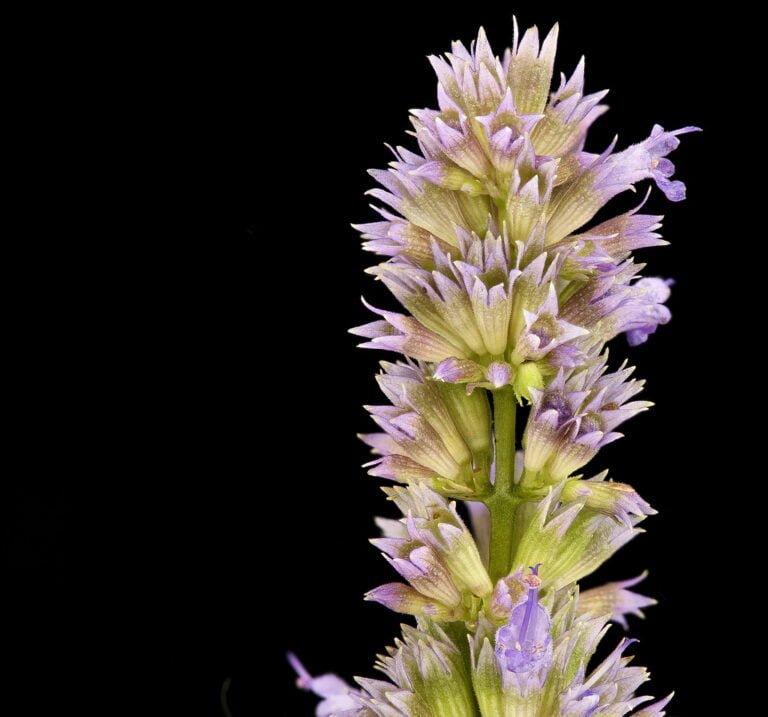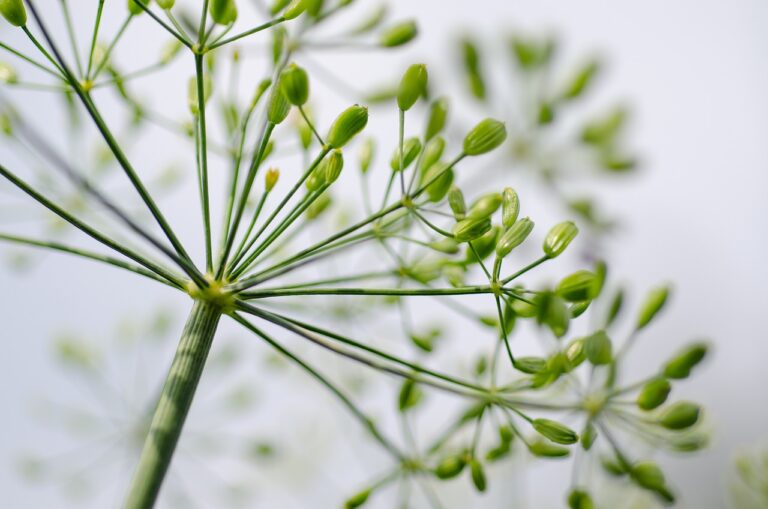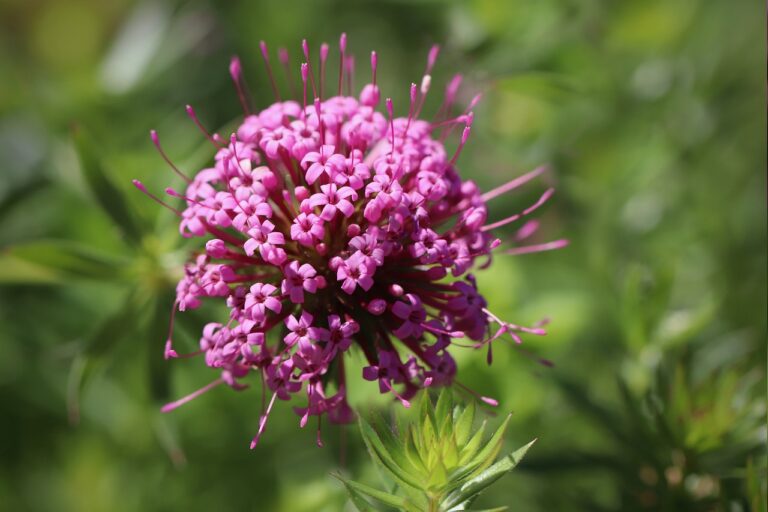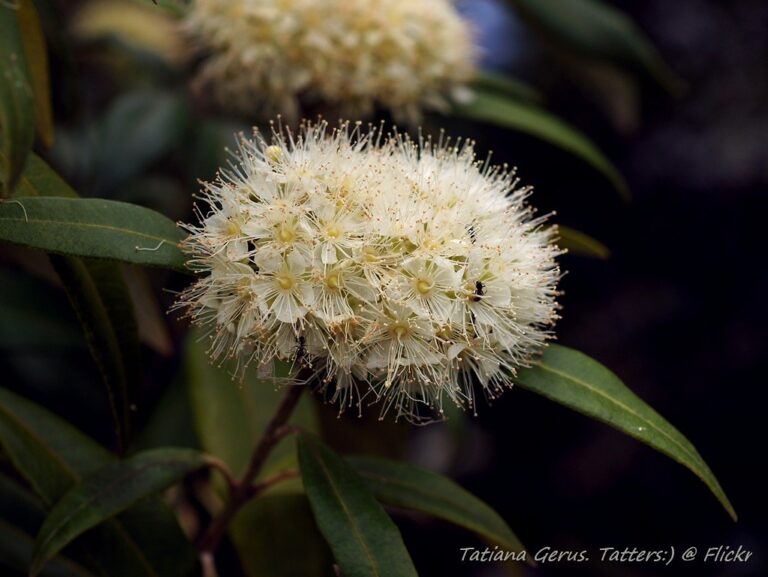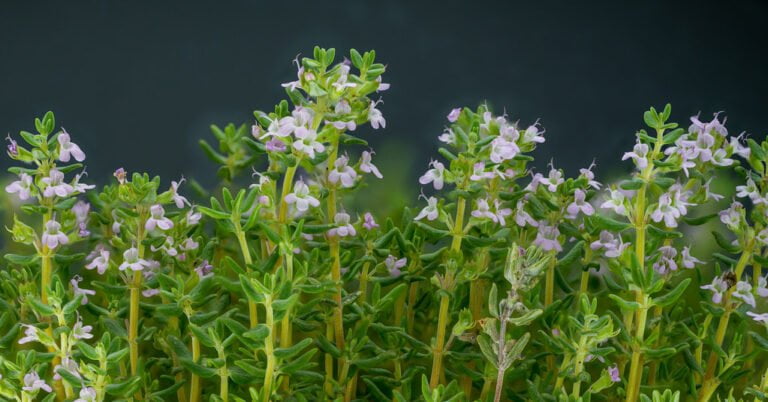Marjoram
This aromatic herb is essential in Mediterranean dishes, thanks to its earthy taste with pine and citrus hints. Trimming it regularly and maintaining the soil consistently moist is crucial. It thrives fresh or dried, enhancing recipes effortlessly. Remember, marjoram is more than just a flavorful herb for your garden—it offers antioxidant benefits and aids in digestion. Investigate its cultivation further to reveal its full potential.
Culinary Uses
Marjoram is commonly utilized in Mediterranean cuisine to infuse a rich, earthy flavor into a variety of dishes ranging from soups and stews to salads and dressings. This herb, with its balsam-like pine and citrus notes, enriches the taste of recipes, making it a staple in many Mediterranean dishes. Whether used fresh or in its dried form, marjoram adds a unique depth to culinary creations.
In Mediterranean cuisine, marjoram is celebrated for its ability to heighten the flavors of both simple and complex dishes. Its versatility allows it to be a key ingredient in herb blends, where its distinct taste shines through. When dried, marjoram intensifies in flavor, making it a go-to choice for seasoning mixes and rubs.
The herbaceous essence of marjoram not only improves the taste of food but also adds a pleasant aroma to the cooking process. Its subtle hints of woodiness make it a favorite for infusing broths and sauces with a comforting undertone. Additionally, marjoram can be brewed into herbal teas, further showcasing its adaptability in various culinary applications.
Health Benefits
With its vibrant green leaves and delicate clusters of tiny white flowers, marjoram offers a wide range of health benefits that have been celebrated for centuries in traditional medicine practices. The herb contains essential oils and compounds like carvacrol, which contribute to its antioxidant and anti-inflammatory properties. These properties may help reduce inflammation in the body and combat infections due to marjoram’s antimicrobial activity.
Studies have indicated that marjoram can aid in alleviating digestive issues and regulating menstrual cycles. The herb has been particularly researched for its potential to improve hormone balance in women with irregular cycles. Its use in teas, extracts, and culinary dishes not only adds a delightful flavor but also provides various health benefits. Marjoram’s aromatic properties make it a versatile addition to many dishes, enhancing both taste and health benefits.
Cultivation Tips
Cultivating marjoram successfully demands providing key growing conditions to guarantee a plentiful harvest of savory and fragrant leaves. Marjoram, a tender perennial plant suited for USDA Zones 7–9 and potentially hardy in zone 5, requires well-draining soil rich in organic matter and full sun exposure for at least six hours daily. To cultivate this versatile herb, consider starting from seeds indoors or purchasing seedlings for outdoor planting after the last frost date. Marjoram spreads prolifically under suitable conditions; hence, growing it in containers can help control its growth and prevent it from overtaking other plants in the garden.
When it comes to culinary use, marjoram’s aromatic leaves are a delightful addition to various dishes, providing a subtle and sweet flavor. For medicinal purposes, marjoram is cherished for its potential health benefits. Essential oil, extracted from the flowering leaves and tops of marjoram through steam distillation, is a valuable product with numerous applications.
To maintain a healthy marjoram plant, regular pruning is recommended to encourage bushier growth and prevent legginess. Additionally, providing consistent moisture without waterlogging the soil is essential for the plant’s overall health. By following these cultivation tips, you can enjoy a bountiful harvest of marjoram that will enrich your culinary creations and provide potential medicinal benefits.
Potential Side Effects
When considering the consumption of marjoram supplements, it is important to be aware of potential interactions with certain medications. Marjoram, while often considered safe for culinary use, may have implications for individuals on blood thinners or diabetes medications. This herb can interfere with blood clotting due to its ability to inhibit platelet formation, which is essential for the coagulation process. Hence, if you are on specific medications, consulting a healthcare provider before incorporating marjoram into your routine is advisable to prevent any adverse reactions.
Furthermore, pregnant or breastfeeding women should exercise caution with marjoram consumption. The essential oil present in marjoram, which is responsible for its aromatic properties and health benefits, may pose risks during pregnancy or nursing. It’s best to avoid marjoram in these situations to prevent any potential complications.
While marjoram is generally well-tolerated, it’s important to be mindful of possible side effects, especially in sensitive individuals. Some individuals may experience allergic reactions or digestive issues when consuming marjoram. If you notice any adverse reactions after using marjoram, discontinue its use and consult with a healthcare professional for guidance.
Substitutes
For those seeking alternatives to marjoram in their culinary creations, oregano stands out as the most important substitute due to their shared flavor profiles and botanical kinship within the same family. Oregano, a member of the mint family like marjoram, offers a slightly stronger and more pungent flavor, making it an excellent replacement in dishes where marjoram is a key ingredient. When substituting marjoram with oregano, it is vital to take into account the potency of oregano and adjust the quantity accordingly to avoid overpowering the dish.
Thyme is another herb that can be used as a replacement for marjoram, especially in recipes where a more earthy and herbaceous flavor profile is desired. Thyme‘s subtle minty undertones and lemony essence can complement dishes well, providing a unique twist to the flavor profile. Basil, with its sweet and slightly peppery notes, can also serve as a suitable alternative for marjoram, particularly in recipes where a hint of sweetness is preferred.
When substituting marjoram with other herbs like sage or savory, it is necessary to adjust the recipes accordingly to guarantee a harmonious blend of flavors. Experimenting with different herbs can lead to discovering new and exciting flavor combinations that enrich the overall culinary experience.

